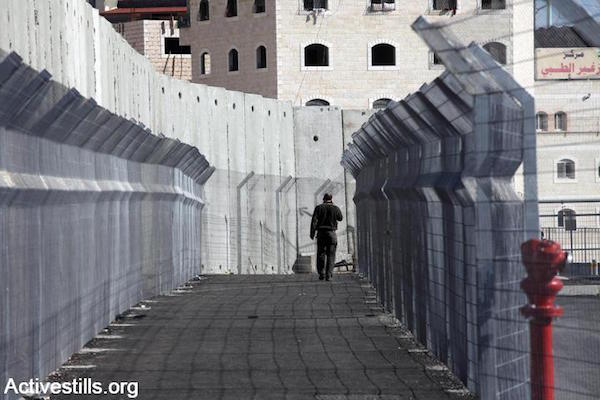Netanyahu and the Israeli right’s alternative to the two-state solution appears to be taking shape. There are only so many ways of describing that shape, and the reality to which it leads.

Out of the six times that the word apartheid has been used to describe Israel or Israeli policy on page A1 of the New York Times over the past nine years, four were in the past month alone, according to a search of the paper’s online archives conducted Tuesday.
What, if anything, has changed? It’s hard to say without being privy to the editorial considerations and political dynamics inside the Gray Lady. A front-page article published Monday, which included the word apartheid three times, does offer some insight into why — at least anecdotally — there appears to be the slightest bit more comfort in using the word.
In his article “Emboldened Israeli Right Presses Moves to Doom 2-State Solution,” New York Times Jerusalem Bureau Chief David Halbfinger does an impressive job surveying the Netanyahu government’s recent sprint to effectively weld-shut the crypt in which lies the two-state solution.
From Netanyahu’s Likud party sharpening its annexation platform, to technical steps being taken by his attorney general and justice minister to speed up what has thus far been creeping annexation, to legislation that seeks to preclude East Jerusalem ever becoming the capital of a Palestinian state, Halbfinger’s review of the latest developments is stark. All that comes on top of repeated declarations by Prime Minister Netanyahu that he will never withdraw Israeli troops from the West Bank or evacuate Israeli settlements there, both of which are presumed to be necessary conditions for a two-state solution.
As all of those elements indicate, the Israeli Right’s alternative to the two-state solution, which many argued is nonexistent over the years, appears to be taking shape. There are only so many ways of describing that shape and the reality to which it leads. Annexing even parts of the West Bank without granting full and equal citizenship rights to the millions of Palestinians who live there, as Netanyahu’s Likud party voted to do this week, would make Israel’s 50-year military dictatorship in the Palestinian territories a permanent fact. And as Fady Khoury wrote here last month, once the occupation is no longer veiled in temporariness, its dual legal systems, lack of basic rights for Palestinians, and separate and unequal laws expose what lies underneath — apartheid.
Is the Times’ page-one acknowledgement of that reality an indication of a trend? Will the fact that the Israeli government has in many ways dropped its mask affect the way the world speaks about and understands the occupation? Counting how many times a word appears on a page can only ever be anecdotal, but it does feel like there’s a shift taking place.
For further reading on whether the term apartheid is appropriate to describe the situation in Israel-Palestine, and if so, whether its use has any utility, I highly suggest reading the collection of essays and articles we have titled “The Apartheid Debate.”


